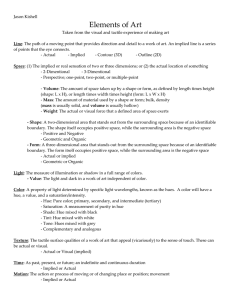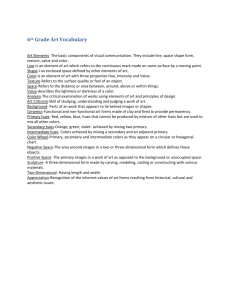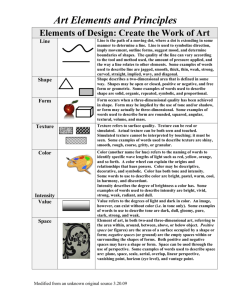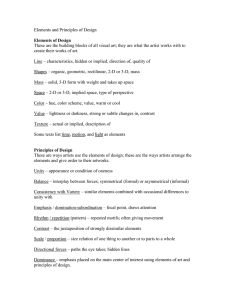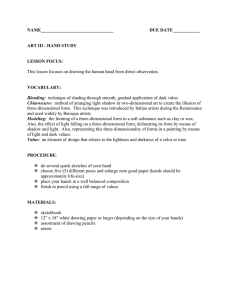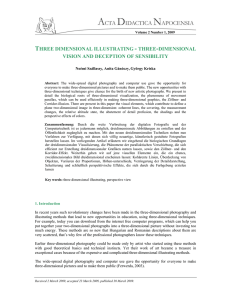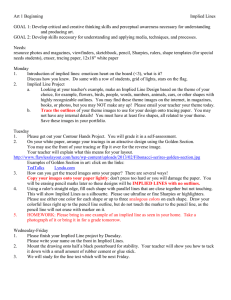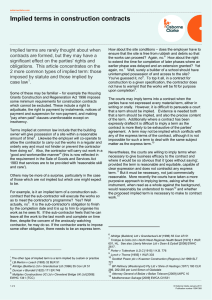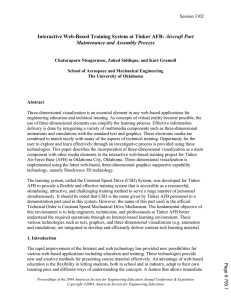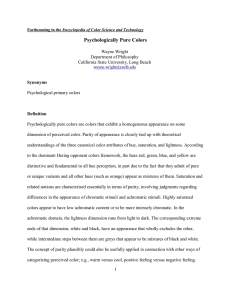Definitions-1 (1).doc
advertisement
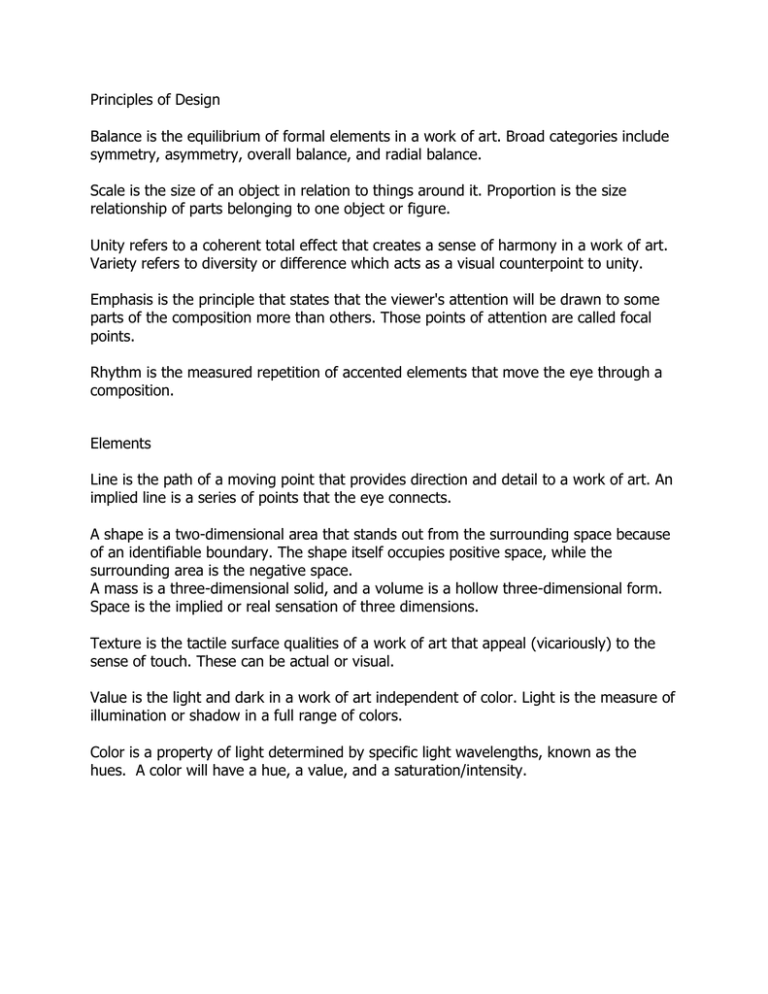
Principles of Design Balance is the equilibrium of formal elements in a work of art. Broad categories include symmetry, asymmetry, overall balance, and radial balance. Scale is the size of an object in relation to things around it. Proportion is the size relationship of parts belonging to one object or figure. Unity refers to a coherent total effect that creates a sense of harmony in a work of art. Variety refers to diversity or difference which acts as a visual counterpoint to unity. Emphasis is the principle that states that the viewer's attention will be drawn to some parts of the composition more than others. Those points of attention are called focal points. Rhythm is the measured repetition of accented elements that move the eye through a composition. Elements Line is the path of a moving point that provides direction and detail to a work of art. An implied line is a series of points that the eye connects. A shape is a two-dimensional area that stands out from the surrounding space because of an identifiable boundary. The shape itself occupies positive space, while the surrounding area is the negative space. A mass is a three-dimensional solid, and a volume is a hollow three-dimensional form. Space is the implied or real sensation of three dimensions. Texture is the tactile surface qualities of a work of art that appeal (vicariously) to the sense of touch. These can be actual or visual. Value is the light and dark in a work of art independent of color. Light is the measure of illumination or shadow in a full range of colors. Color is a property of light determined by specific light wavelengths, known as the hues. A color will have a hue, a value, and a saturation/intensity.
